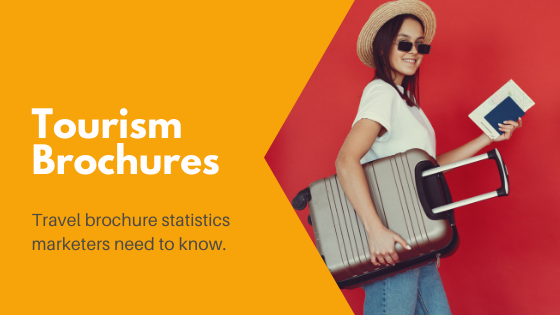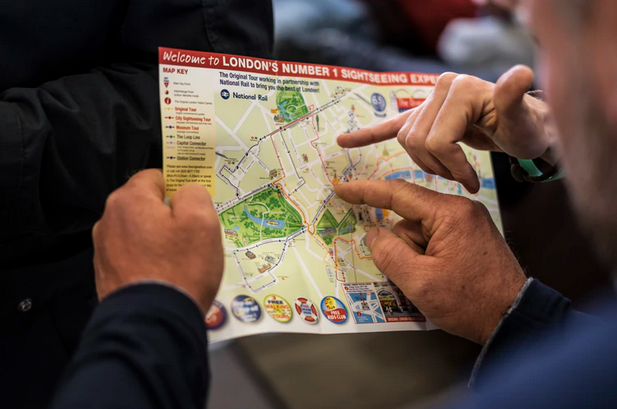Find out why tourism marketers still benefit from print materials like vacation brochures and travel catalogues.

Nothing can replace the excitement travel catalogues and tourist pamphlets elicit!
Remember the last time you planned and then went on a dream vacation? Well, at some point during the planning phase, or while on the trip itself, you probably picked up a brochure or two.
Perhaps you took home a travel catalogue from your local travel agency—for ideas or to find the perfect travel package.
It may be that you found some interesting pamphlets for local tours and activities on display at the airport.
Or maybe your hotel’s concierge handed over a mini destination guide with F&B recommendations you simply couldn’t resist.
Either way, I’m sure you would agree: It’s hard to replace the feeling of excitement that comes with perusing tourism-related print materials.
There’s just something about travel brochures that triggers joy and builds anticipation that’s hard to replicate with online readings or PDFs stored on your phone. Because holding something tangible in your hands? That’s what makes the trip feel real—and what makes it all so fun!
Vacation brochures aren’t just about price lists and contact data—they’re about telling stories!
That’s precisely why, even though we’re so digitally-inclined these days, travel brochures continue to play an important role in the travel planning process, i.e. before, during, and even post-trip.
Here’s why: Vacation brochures have evolved past focusing on price lists into telling engaging stories about the destination, local culture, the people, food, unique experiences, and so much more!
Put another way, beyond being a source of information, tourism brochures are now carefully crafted to trigger wanderlust. As such, they’ve become an indispensable part of the travel purchase journey.
And, as travelers, we collect these types of hard copy materials for inspiration; for practical purposes (like actually booking said activity or excursion); and as mementos of past adventures—seeing them after a trip conjures up memories of where we’ve been and what we’ve seen. (Plus, they’re great for scrapbooking.)
But that’s not all – we also collect tourist brochures for a variety of other reasons.
For example:
- No WiFi? No problem! Tourist pamphlets have got you covered. They’re lightweight and easy to store in your backpack or handbag. They also contain all the information you actually need at that given moment.
- Compared to PDFs or links, sharing vacation brochures with family, friends, or even fellow travel companions feels so much more gratifying!
- To whet our appetite for the next big trip. When you get back home and find those brochures stuffed in your suitcase, they don’t just bring back wonderful memories, they also trigger a desire to plan the next big adventure.

These travel brochure statistics show you why tourism brochures remain effective marketing tools.
It can’t be denied:
- E-confirmations are practical;
- downloadable PDF guides are convenient;
- and interactive web resources are certainly engaging.
But when travelers hit the road, they turn to brochures, maps, and print guides more than the internet. Heck, sometimes, they don’t even have internet! After all, depending on the destination, roaming fees and local SIM cards don’t always come cheap.
So while the internet may be our first choice for research or obtaining information at home, once a trip is booked – or the vacation is finally underway – clients still prefer to walk away with something tangible.
These travel brochure statistics, courtesy of the Bentley University CMT 2018 Visitor Survey, show you why travel industry brochure advertising isn’t going anywhere for now.
On tourist brochure use:
- Studies show that women tend to be the decision makers on a trip
- They are 3.4% more likely than men to use a brochure at their destination
- Brochures are capable of influencing travelers in all age groups, having been appreciated and used by:
- 68% of those 18-24 years of age, i.e. those typically considered ‘digital natives’
- 80% of those aged 65+
On what travelers think about travel pamphlets:
- 54% of visitors view them as an “easy to use hard copy of information”
- 54% find them trustworthy
- 48% appreciate that they are convenient and always available
On why brochure marketing continues to work in the travel industry:
- 79% of visitors picked up a brochure during their travels
- 73% of visitors were influenced by a brochure at their destination
- 85% of visitors became aware of an attraction or business because of a brochure that they picked up
- 73% of visitors would contemplate changing their plans because of a brochure
- 61% of visitors planned to buy tickets or merchandise that they learned about through a brochure
- One brochure is shared with 2.5 other individuals on average, which gives printed brochures an average distribution reach of 3.5 readers per brochure
Other notable survey findings:
- Hospitality professionals say that 88% of their guests use printed brochures in their hotels
- 53% of those surveyed said they used printed materials as part of their pre-trip planning
- On-location use of brochures increased from 53% in 2014 to 69% in 2016 and then 73% in 2018
Sources: Bentley University CMT 2016 Visitor Survey, Bentley University CMT 2018 Visitor Survey, Bentley University CMT Hospitality Study 2019
In short, travel catalogues, brochures, pamphlets, and tourist booklets are the perfect complement to web materials like landing pages and even YouTube videos. Clearly, they’re not going anywhere just yet!
So, here’s an important question: When was the last time you paid attention to the content and quality of yours?
If you’re struggling to craft the perfect tourism brochure, and you want to make a memorable first impression, then it’s time to work with an expert travel copywriter.